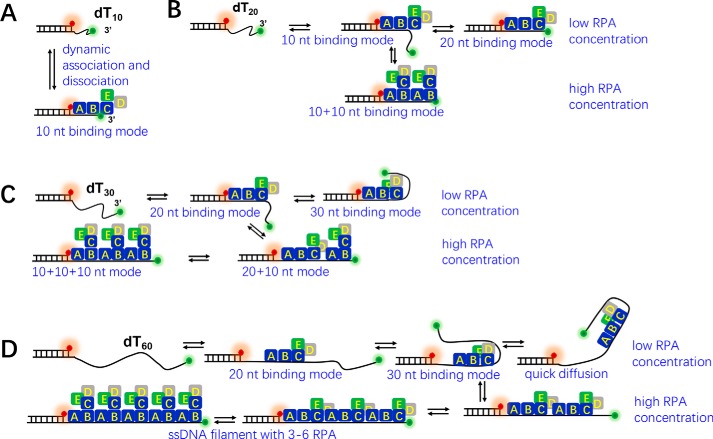Figure 8.
The proposed model of the dynamic binding between RPA and ssDNA. A, RPA undergoes rapid association and dissociation with dT10 using the 10-nt-binding mode. B, RPA switches dynamically between the 10- and 20-nt-binding modes on a 20-nt ssDNA. With increasing protein concentrations, two RPAs may contact the DNA side-by-side in the 10 + 10–nt mode. C, RPA switches dynamically between the 20- and 30-nt-binding modes on a 30-nt ssDNA. With increasing protein concentrations, two or three RPAs may contact the DNA in the 20 + 10–nt mode and the 10 + 10 + 10–nt mode. D, RPA switches dynamically between the 20- and 30-nt-binding modes on a 60-nt ssDNA and quickly diffuses on the ssDNA. With increasing protein concentrations, two to six RPAs may contact the DNA in the 30 + 30–nt mode, the 20 + 20 + 20–nt mode, the 20 + 20 + 10 + 10–nt mode, the 20 + 10 + 10 + 10 + 10–nt mode, and the 10 + 10 + 10 + 10 + 10 + 10–nt mode.

